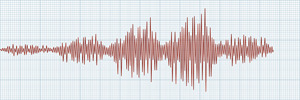
PUMPA - SMART LEARNING
எங்கள் ஆசிரியர்களுடன் 1-ஆன்-1 ஆலோசனை நேரத்தைப் பெறுங்கள். டாப்பர் ஆவதற்கு நாங்கள் பயிற்சி அளிப்போம்
Book Free DemoThere are two types of mechanical waves, they are
- Transverse wave
- Longitudinal wave
Transverse wave:
- In a transverse wave, the particles present in the medium vibrate in a direction perpendicular to the direction of propagating wave.
- Example: Waves in strings, light waves, etc.
- Transverse waves are produced only in solids and liquids.

Transverse nature of waves
Longitudinal wave:
- In a longitudinal wave, the particles of the medium vibrate in a direction parallel to the direction of propagation of the wave.
- Example: Waves in springs, sound waves in a medium.
- Longitudinal waves are produced in solids, liquids and also in gases.

Longitudinal nature of waves
The seismic wave formed during an earthquake is an example of a longitudinal wave. The waves travelling through Earth's layers due to explosions and earthquakes are called seismic waves. Using a hydrophone and seismometer, one can study these waves and record them. Seismology is the branch of science that deals with the study of seismic waves.

Seismograph